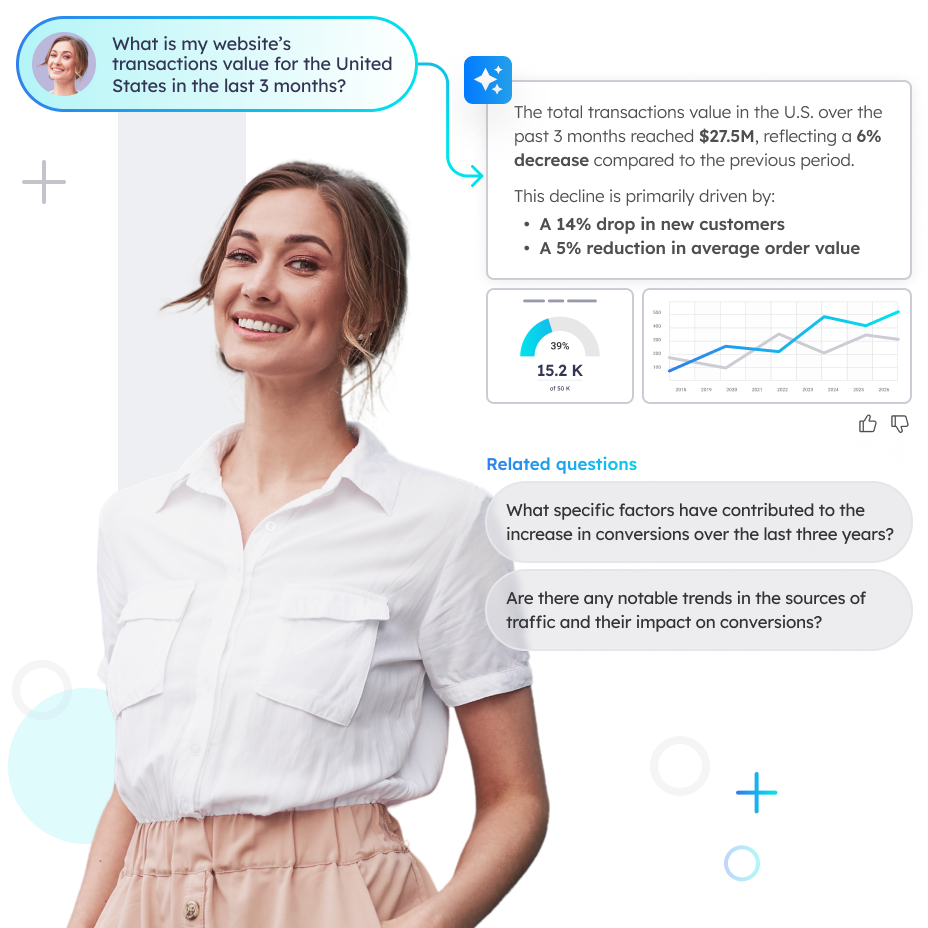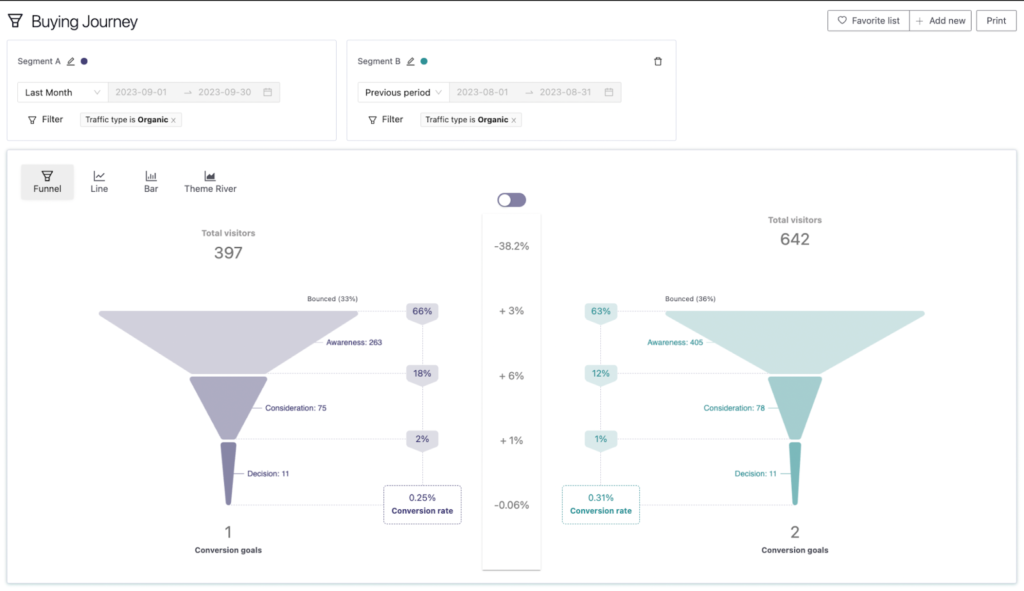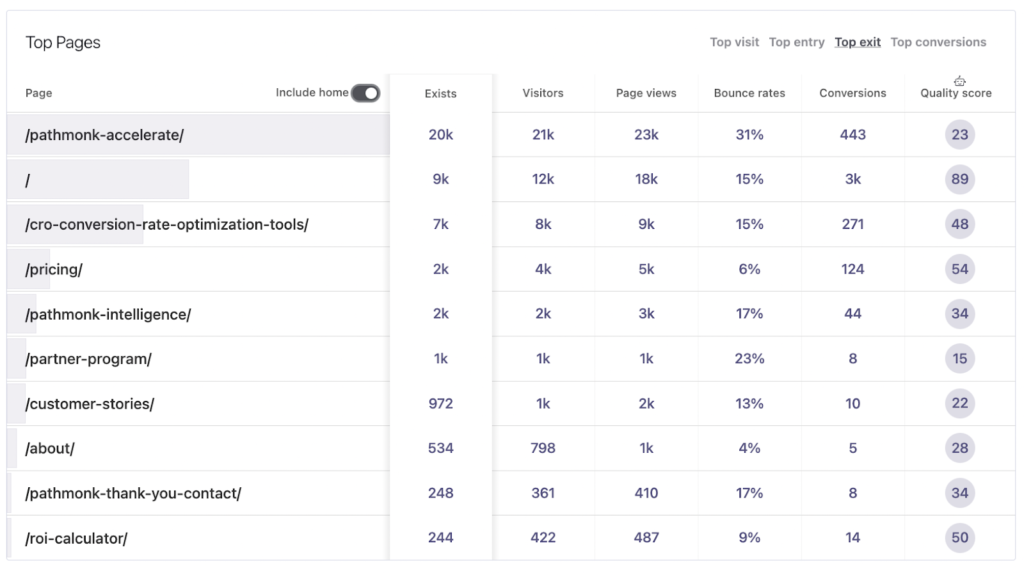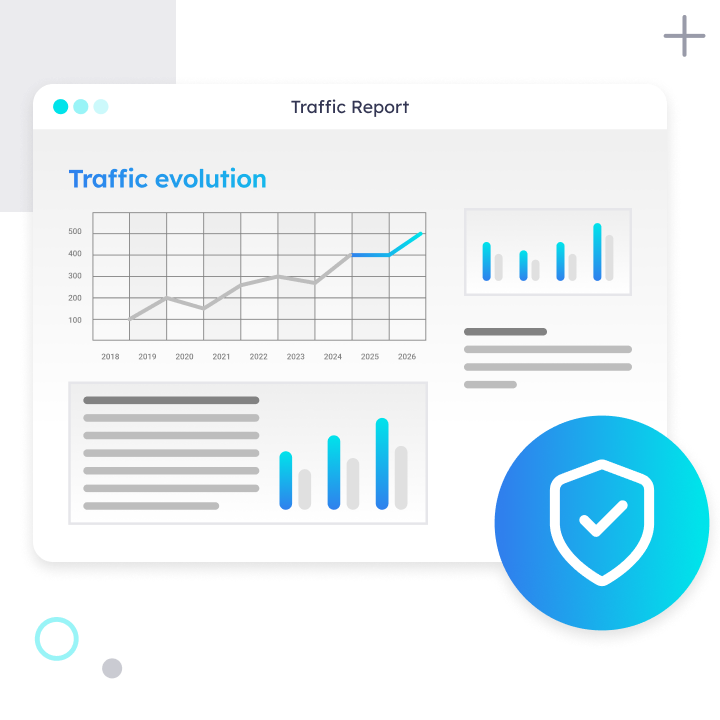
In today’s fiercely competitive online world, having a website or online presence is no longer enough. The real game-changer lies in creating a conversion path that not only attracts visitors but guides them seamlessly toward taking desired actions, whether that’s making a purchase, filling out a form, or subscribing to your newsletter.
The value of a well-optimized conversion path cannot be overstated. It’s the difference between a website that merely exists and one that thrives; driving revenue, and fostering customer loyalty. In this comprehensive post, we will walk you through the step-by-step process of creating a conversion path that truly converts. From understanding your audience to implementing data-driven strategies, we’ll dive into the core principles and best practices that will empower you to transform your digital presence into a conversion-generating powerhouse.
The Basics of a Well-Structured Conversion Path
In the foundation of creating a conversion path that converts lies a deep understanding of your audience and a clear definition of your goals.
Identifying Your Audience and Creating Buyer Personas
- Start by identifying your target audience, the people most likely to engage with your brand.
- Develop detailed buyer personas, and fictional representations of your ideal customers, to gain insights into their demographics, behavior, and pain points.
- Conduct thorough audience research to gather data and refine your understanding of your audience’s preferences and motivations.

Defining Conversion Goals and KPIs
- Clearly define your conversion goals, whether they’re sales, lead generation, or other desired actions.
- Distinguish between micro-conversions (smaller, incremental actions like newsletter sign-ups) and macro-conversions (larger, primary goals like product purchases).
- Establish Key Performance Indicators (KPIs) to measure the success of your conversion path, such as conversion rates, click-through rates, and revenue generated.
Crafting a Compelling Value Proposition
- Define and communicate your Unique Value Proposition (UVP), highlighting what sets your product or service apart from competitors.
- Align your UVP with the specific needs and pain points of your identified buyer personas.
- Emphasize the benefits of choosing your product or service and how it effectively addresses customer pain points.
- Designing User-Friendly Landing Pages
- Acknowledge the critical importance of landing page design in the conversion path.
- Implement elements on your landing page that contribute to higher conversion rates, such as clear and persuasive headlines, engaging visuals, and compelling CTAs.
- Continuously improve your landing pages through A/B testing to identify the most effective variations that drive conversions.
Optimizing the Sales Funnel: Maximizing the Path to Conversion
Creating a conversion path is like constructing a bridge between potential customers and your desired goals. It’s a journey that involves multiple stages, and each step along the way represents an opportunity for optimization and improvement. This is how you can ensure that your audience seamlessly progresses from initial awareness to final conversion:
1. Mapping Out the Conversion Funnel Stages
Awareness: The Top of the Funnel (TOFU)
- At the very top of the conversion funnel is the awareness stage, where potential customers become acquainted with your brand or product.
- Here, they may come across your content through various channels like social media, search engines, or referrals.
- To optimize this stage, create compelling and informative content that aligns with the interests of your target audience. This can include blog posts, infographics, videos, and social media updates.
Interest: The Middle of the Funnel (MOFU)
- In the interest stage, prospects have shown a deeper interest in your offerings.
- They may have engaged with your content, signed up for a newsletter, or downloaded a resource.
- Optimize this stage by providing valuable resources, such as e-books, webinars, or case studies, that offer in-depth information and address specific pain points.
Consideration: Nurturing Leads
- At this stage, prospects are considering your product or service as a solution to their needs.
- Implement lead nurturing campaigns, including personalized email sequences and targeted content, to maintain engagement.
- Use marketing automation tools to segment your leads and deliver tailored content to specific segments.
Increase +180%
leads
demos
sales
bookings
from your website with AI
Get more conversions from your existing website traffic delivering personalized experiences.

Conversion: The Bottom of the Funnel (BOFU)
- The conversion stage is where prospects are actively looking to make a purchase decision.
- Provide clear product information, pricing details, and compelling offers to encourage conversion.
- Use retargeting strategies to re-engage visitors who have shown intent but haven’t yet converted.
How to build an AI-ready marketing strategy
Gain the insights and strategies needed to harness the power of AI for marketing success.

2. Identifying Drop-off Points
Analyzing Data and Metrics
- Utilize Pathmonk Intelligence to understand user behavior at each stage of the conversion funnel.

- Identify drop-off points by looking for significant declines in conversion rates between stages
- Pay attention to metrics like bounce rates, exit rates, and time spent on pages to pinpoint areas that need improvement.

User Feedback and Surveys
- Collect user feedback through surveys, on-site feedback forms, or user testing.
- Ask questions about the user experience, reasons for leaving the site, and any obstacles encountered.
- Use this qualitative data to complement your quantitative analytics and gain deeper insights into user behavior.
Understand your customer journey analytics
See how your users behave, find drop-offs, and receive actionable insights with AI.

3. Implementing Improvements at Each Stage
Awareness Stage Optimization
- Improve the visibility and shareability of your content on social media platforms.
- Optimize SEO to increase organic search traffic and reach a wider audience.
- Experiment with paid advertising campaigns to boost brand awareness among relevant audiences.
Interest and Consideration Stage Optimization
- Personalize content recommendations based on user behavior and interests.
- Create engaging email drip campaigns to nurture leads with relevant content.
- Offer interactive tools or quizzes to help users assess their needs and preferences.
Conversion Stage Optimization
- Streamline the checkout process to minimize friction and reduce cart abandonment rates.
- Provide clear product descriptions, high-quality images, and customer reviews to boost confidence in purchasing decisions.
- Offer incentives like discounts, free shipping, or limited-time promotions to motivate conversions.
Post-Conversion Engagement
- The optimization process doesn’t end with conversion; it extends into post-purchase engagement.
- Implement post-purchase email sequences to request reviews, offer support, or suggest complementary products.
- Encourage customer loyalty and repeat purchases through loyalty programs and personalized recommendations.
4. Optimizing for Mobile
To effectively optimize for mobile, adopt a ‘mobile-first’ mentality in your design and development process. This approach prioritizes mobile devices as the primary platform for user engagement, ensuring that your website and content are created with mobile users in mind from the outset.
Mobile users should be able to access your website and content effortlessly, regardless of their device’s screen size or orientation. A mobile-responsive design adapts to various screen sizes and resolutions, providing a consistent and user-friendly experience.
Google and other search engines prioritize mobile-friendly websites in their rankings. By having a mobile-responsive design, you not only enhance the user experience but also improve your search engine visibility, potentially leading to higher organic traffic and conversions.
These are some mobile-specific user experience considerations to take into account:
- Page Speed: Mobile users are often on the go and expect speedy access to information. Optimize your website’s loading times for mobile devices, minimizing the use of large images and unnecessary scripts. Consider implementing Accelerated Mobile Pages (AMP) to further enhance mobile page speed.
- Touch-Friendly Design: Mobile devices rely on touch gestures. Ensure that buttons, links, and interactive elements are large enough to be easily tapped with a finger, avoiding overcrowded layouts that can lead to accidental clicks.
- Content Formatting: Tailor your content for mobile consumption. Use shorter paragraphs, concise headings, and bullet points to make information more digestible. Prioritize the most critical content at the top to capture users’ attention quickly.
- Mobile Navigation: Simplify navigation menus and provide intuitive mobile menus like hamburger icons. Users should easily find their way through your site, accessing important sections or pages with minimal effort.
5. Implementing Trust Signals: Fostering Confidence for Higher Conversions
These trust-building strategies encompass not only the foundation of trust but also the reinforcement of trust through social proof, testimonials, and security and privacy assurances.
- Professional Design: A polished and professional website design goes a long way in building trust. An outdated or poorly designed site can raise doubts about your legitimacy.
- Contact Information: Make your contact information easily accessible. Provide a clear way for visitors to reach out, whether through a contact form, email address, or phone number.
- About Us Page: An informative ‘About Us’ page that details your company’s history, mission, and team members can humanize your brand and build trust.
- Transparency: Be transparent about your products or services, pricing, and policies. Hidden fees or vague information can erode trust quickly.
- Certifications and Awards: Display any industry certifications, awards, or affiliations prominently on your site to showcase your expertise and credibility.
- Customer Reviews: Encourage satisfied customers to leave reviews and ratings on your website or third-party review platforms. Positive reviews act as social proof of your product or service’s quality.
- Case Studies: Develop in-depth case studies that highlight real-world examples of how your product or service solved specific problems or delivered exceptional results for clients.
- Trust Badges: Display trust badges, such as SSL certificates or payment security icons, to reassure visitors that their personal information is safe when making transactions on your site.
- Influencer Endorsements: If applicable, leverage influencer marketing to have well-known individuals or experts in your industry endorse your product or service. Their authority can bolster trust.
Multichannel Conversion Paths: Maximizing Reach and Engagement
In a world where consumers interact with brands through various online and offline touchpoints, it’s imperative to expand your reach beyond a single channel. Relying solely on one channel limits your ability to connect with potential customers who prefer different modes of engagement. By embracing multichannel marketing, you can meet your audience where they are and provide a consistent experience across platforms.
For instance, if your primary channel has been email marketing, consider diversifying into social media advertising, content marketing, pay-per-click (PPC) advertising, and even offline channels like direct mail or events, depending on your target audience and industry.
How to Integrate Multiple Marketing Channels
Integration is the cornerstone of a successful multichannel conversion strategy. Your goal should be to create a unified and seamless user experience as customers traverse through various channels. To achieve this, first, you will need to map your marketing touchpoints, and then you’ll need to invest in marketing technology solutions that enable data sharing and synchronization between channels.
Free template: CRO audit checklist
Discover everything you need to start identifying drop-offs and increase conversions.

Marketing automation platforms, customer relationship management (CRM) systems, and analytics tools play pivotal roles in integrating multiple marketing channels. These technologies allow you to gather and consolidate customer data, track user behavior, and trigger personalized messages and offers across different touchpoints.
For instance, a user who interacts with your brand on social media and subsequently receives an email with tailored content, only to later encounter a relevant ad on a search engine, experiences a seamless multichannel journey. This synergy across channels can significantly increase the likelihood of conversion.
While expanding and integrating channels is essential, maintaining consistency is equally crucial. Inconsistencies in messaging, branding, or user experience can lead to confusion and, ultimately, a drop in conversions. To ensure consistency:
- Branding: Your brand identity, including logos, colors, and tone of voice, should remain consistent across all channels. This ensures that users instantly recognize your brand, fostering trust and credibility.
- Messaging: Develop a cohesive messaging strategy that aligns with your brand values and resonates with your target audience. This messaging should be consistent across emails, social media posts, advertisements, and website content.
- User Experience (UX): The user experience should be seamless, regardless of the channel users are on. Ensure that the navigation, design, and functionality of your website, landing pages, and mobile apps are uniform and user-friendly.
- Data: Centralize customer data to create a single customer view. This allows you to track customer interactions across channels and deliver personalized content and recommendations based on their behavior and preferences.
Free template: CRO audit checklist
Discover everything you need to start identifying drop-offs and increase conversions.

Incorporating these practices can lead to a harmonized multichannel conversion strategy where users enjoy a consistent and tailored experience, regardless of where and how they interact with your brand. The result is a higher likelihood of engagement and conversion as users progress through the conversion path.
The evolution of digital marketing demands a multichannel approach that expands beyond a single channel, integrates various marketing touchpoints, and maintains consistency across them. By embracing this strategy and leveraging technology to orchestrate seamless user journeys, you can create a robust and effective conversion path that maximizes engagement and conversions. In an era of diverse consumer preferences and interactions, multichannel conversion paths are the key to staying competitive and meeting the ever-changing needs of your audience.
Conclusion
Creating a conversion path that works is both an art and a science in digital marketing. It involves understanding your audience, setting goals, crafting compelling messages, designing user-friendly pages, optimizing the conversion funnel, and building trust. Personalization, segmentation, mobile optimization, data-driven decisions, and dynamic content strategies are essential components.
But this journey doesn’t have an endpoint. The digital landscape is ever-changing. To stay ahead, adaptability and innovation are key. Your audience isn’t uniform; they’re unique individuals. Building trust takes time, and data is your guiding light.
As you embark on this mission, remember that it’s not just about clicks and sales; it’s about creating value, fostering relationships, and making a real impact. With dedication, innovation, and a commitment to excellence, you can create conversion paths that leave a lasting impression, drive growth, and turn visitors into loyal customers. So, here’s to your journey toward conversion success—one step at a time.





